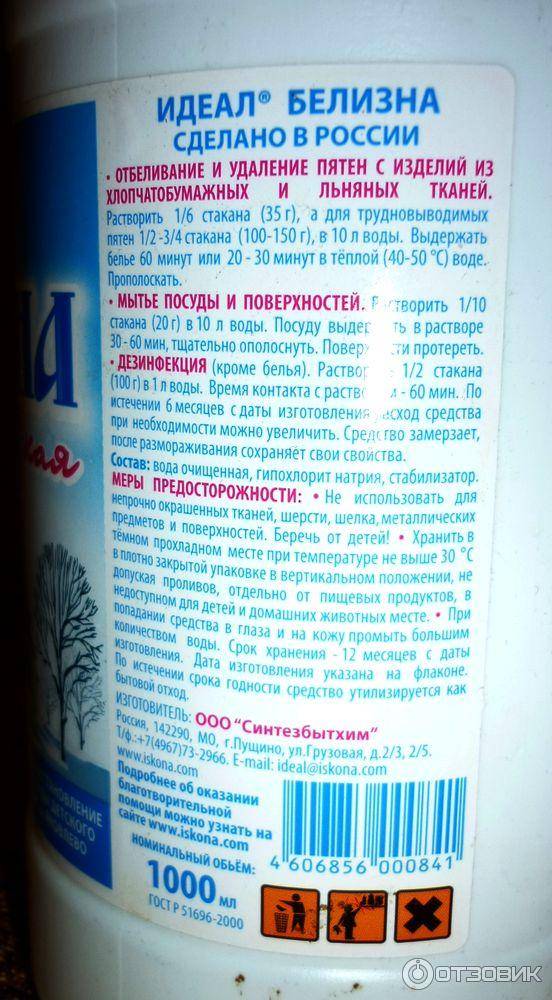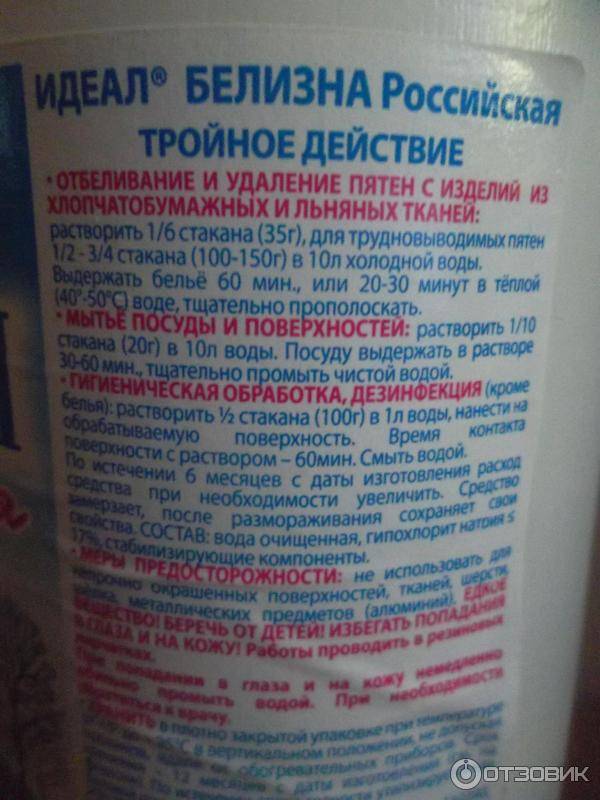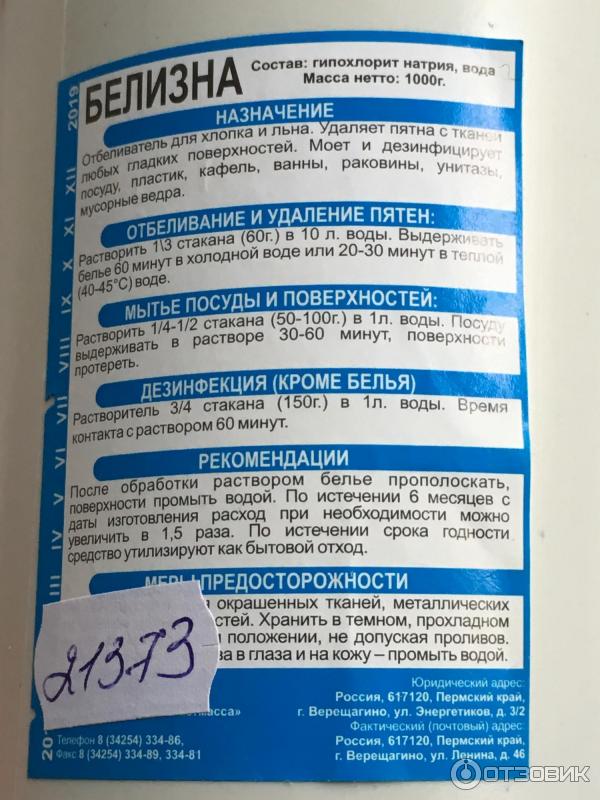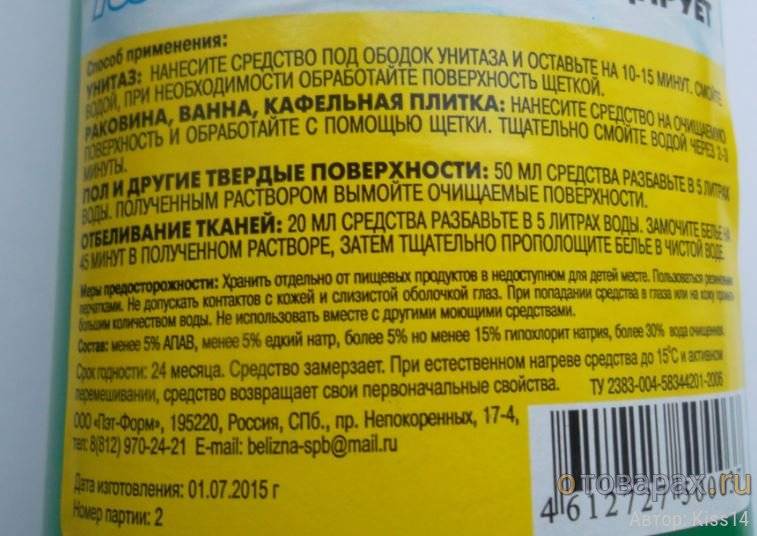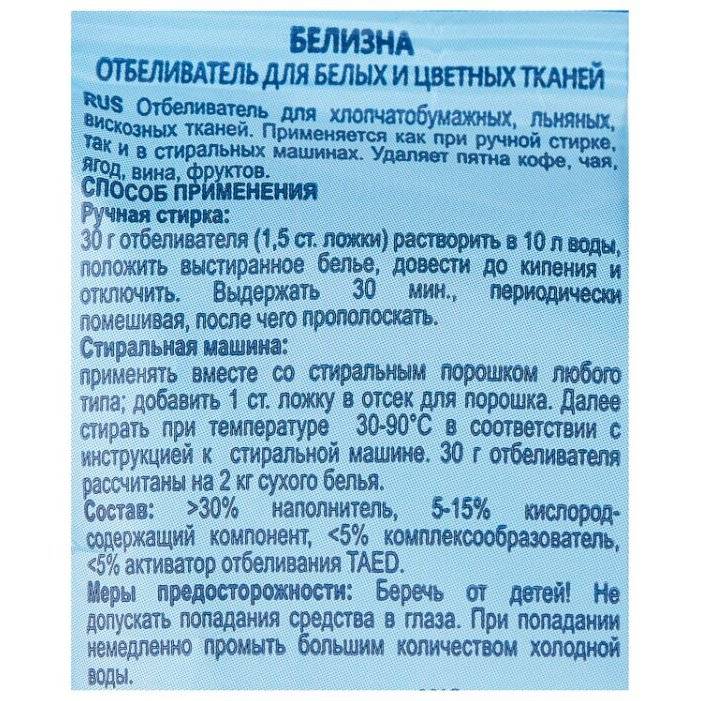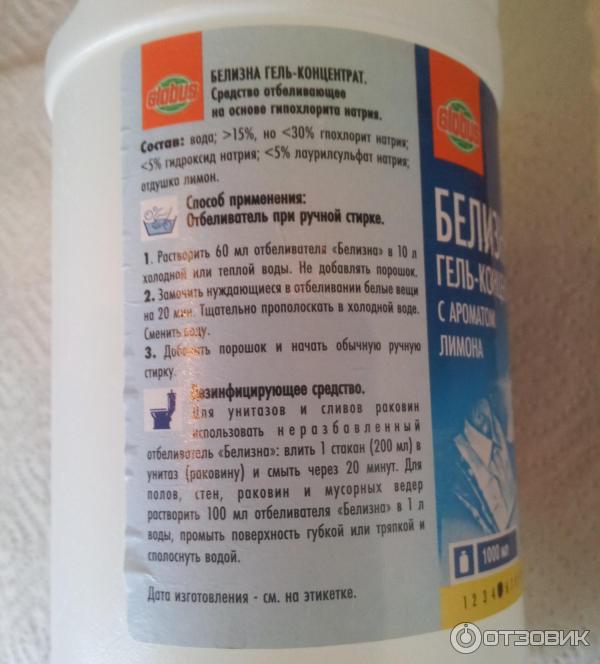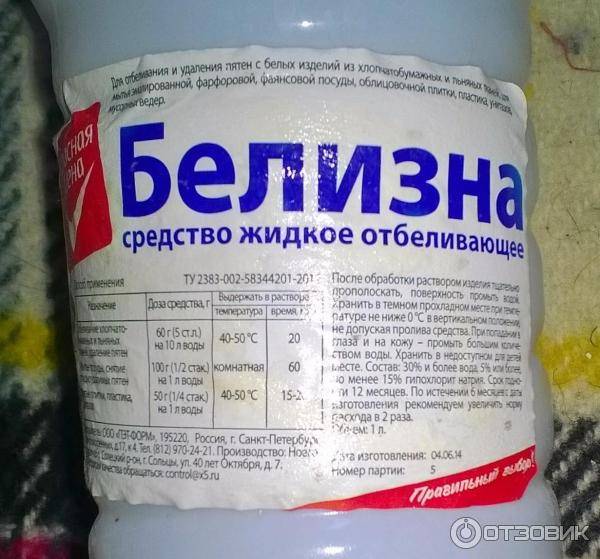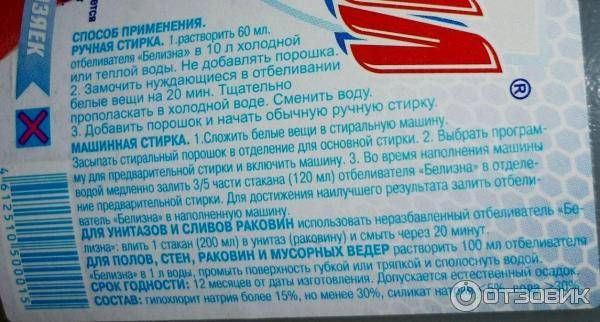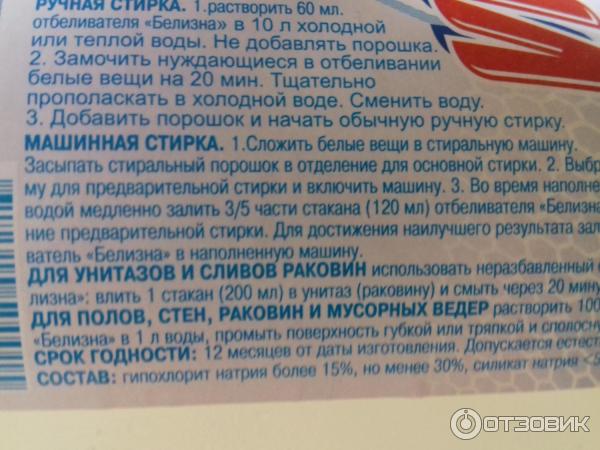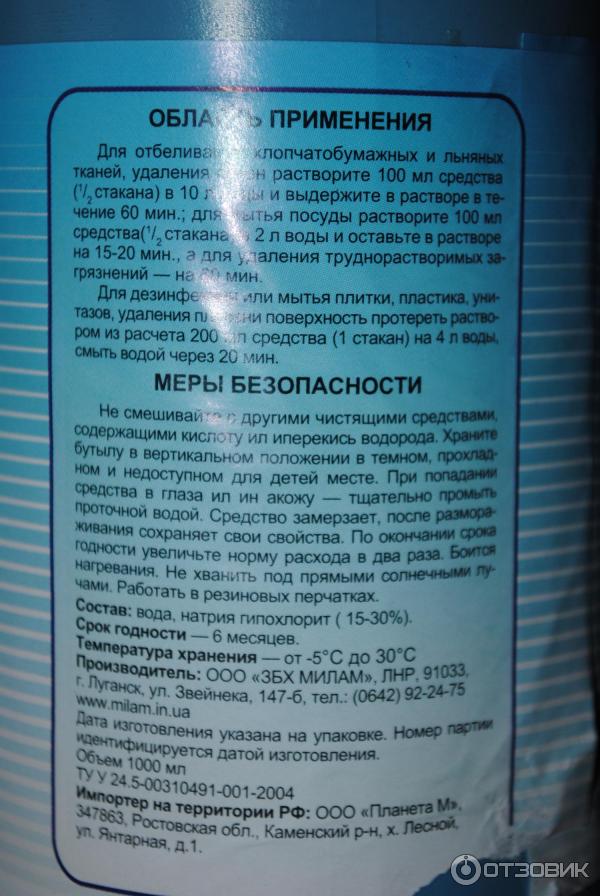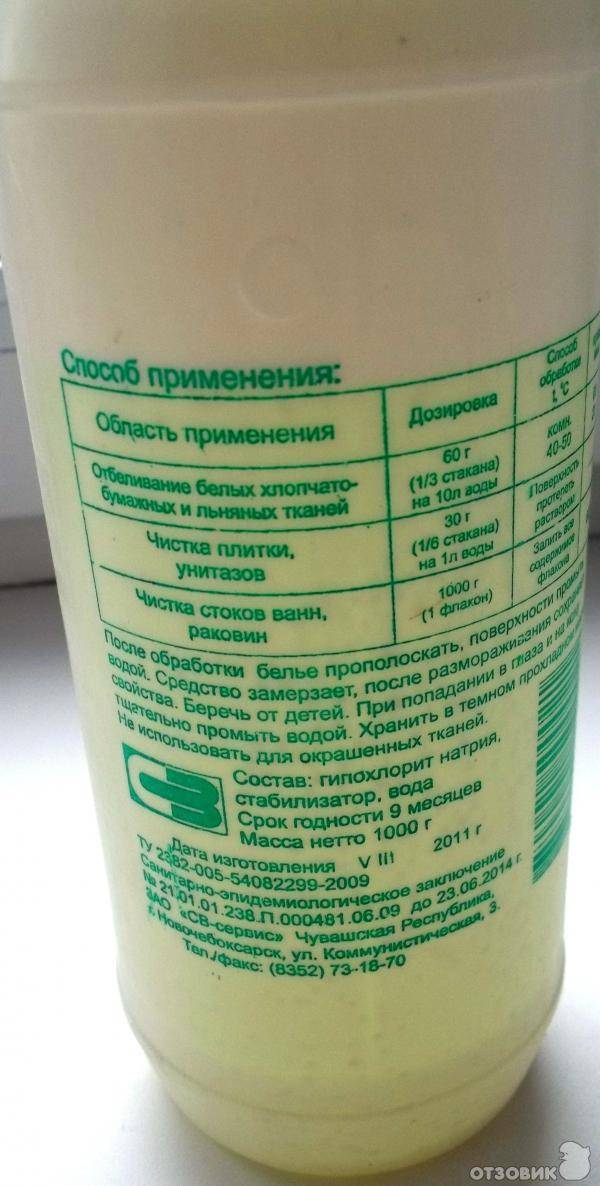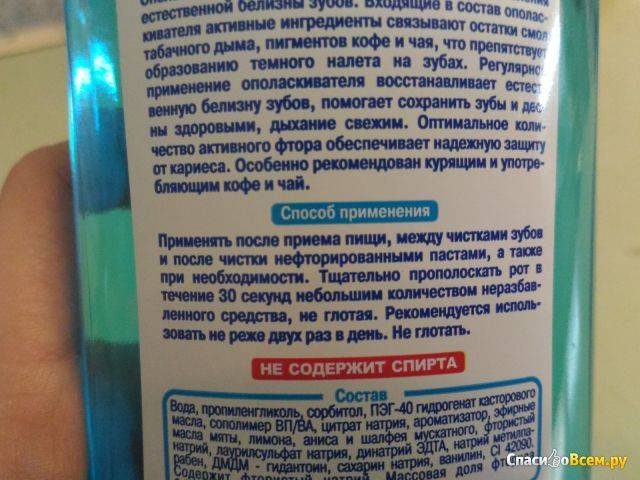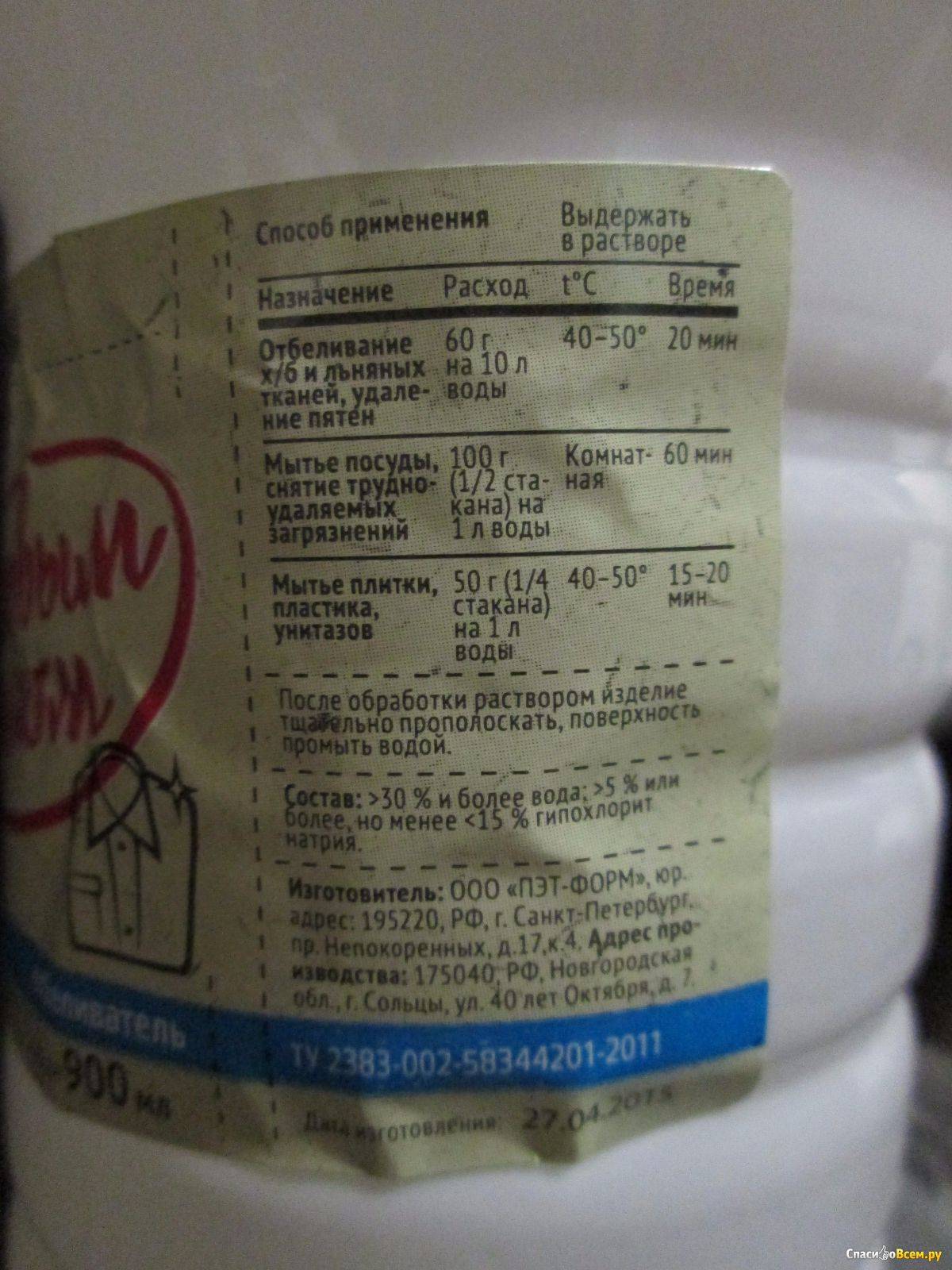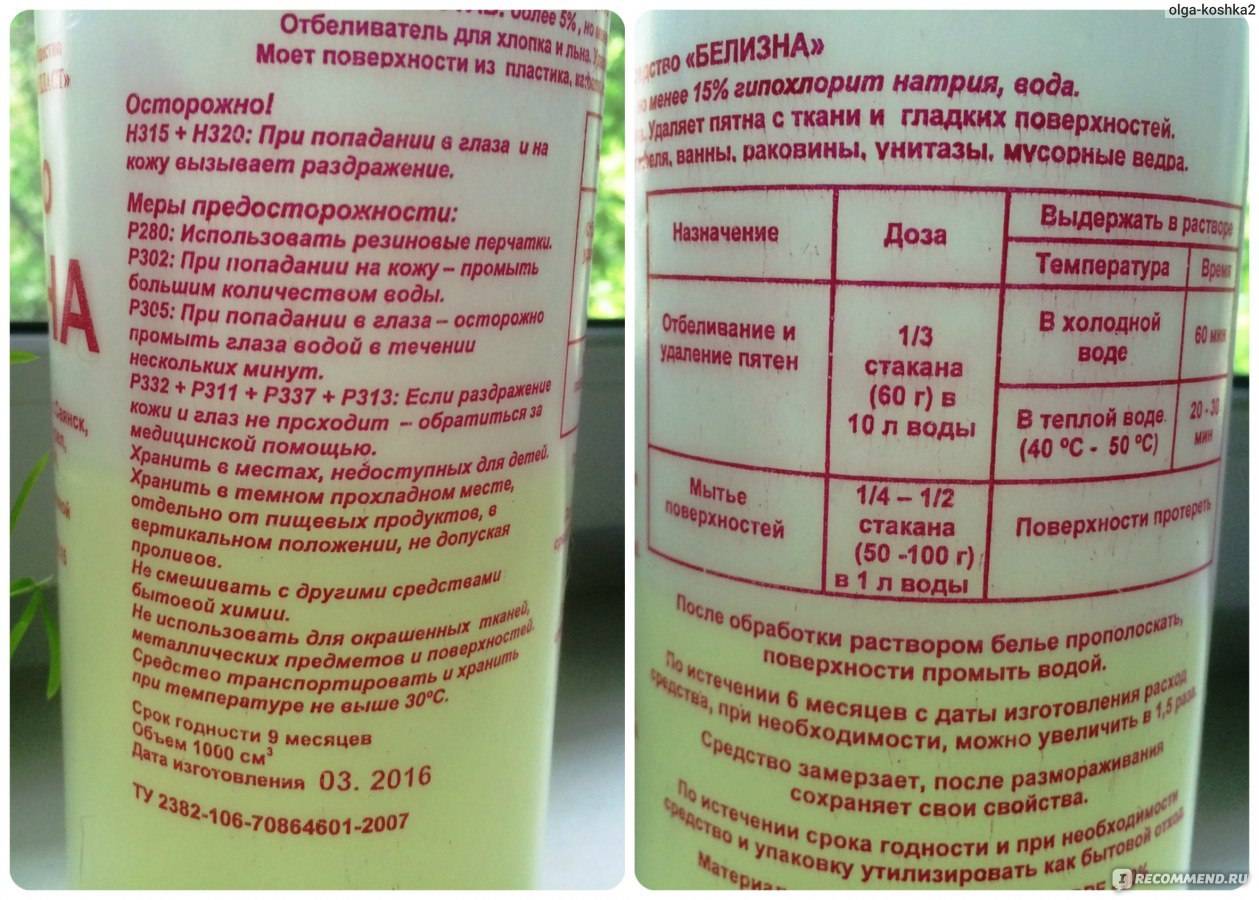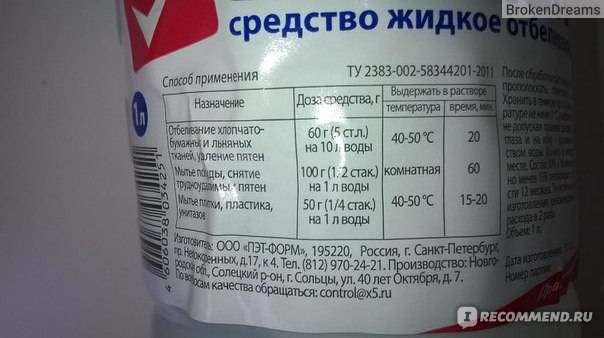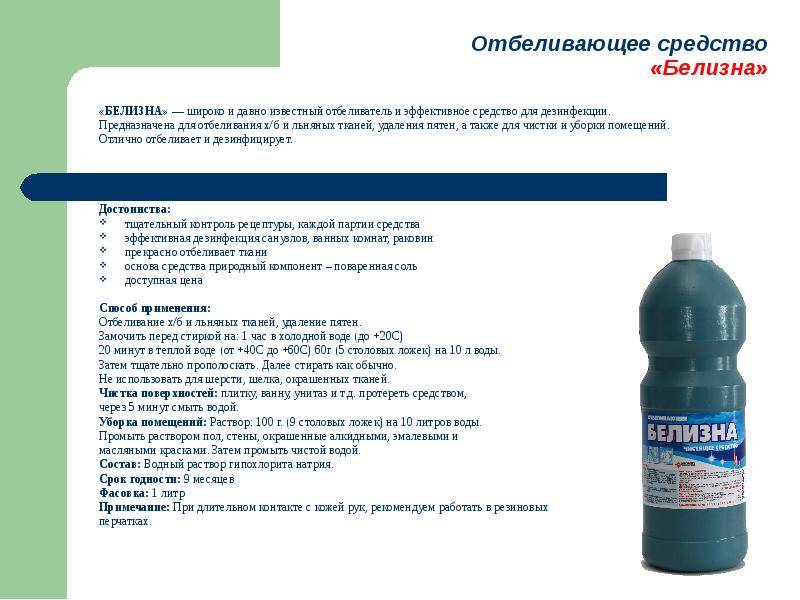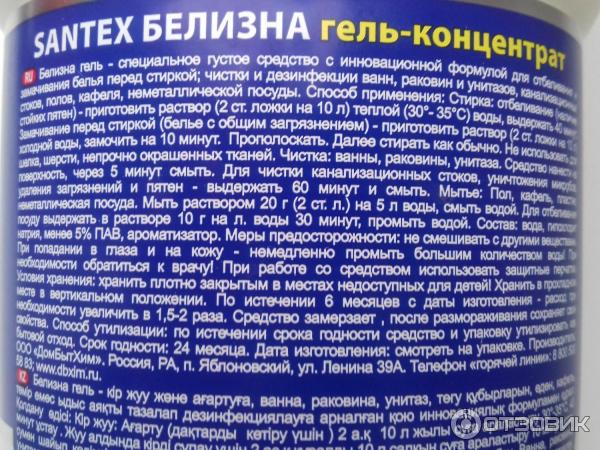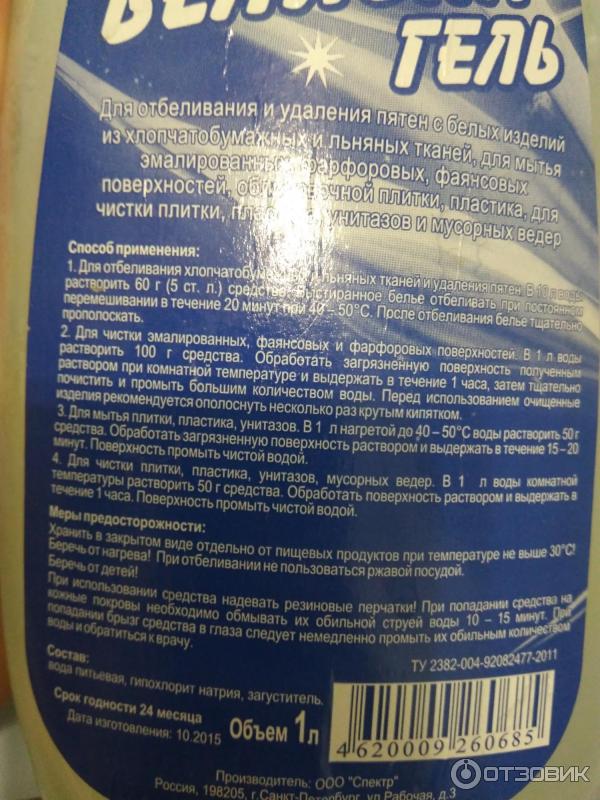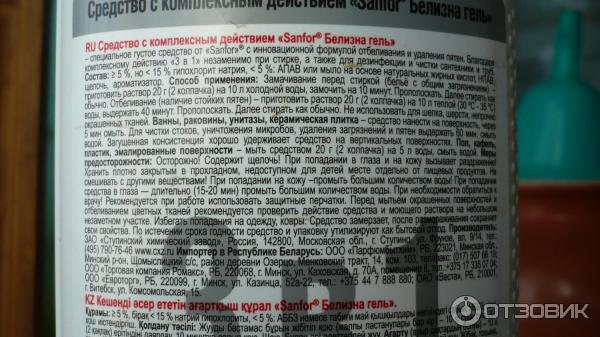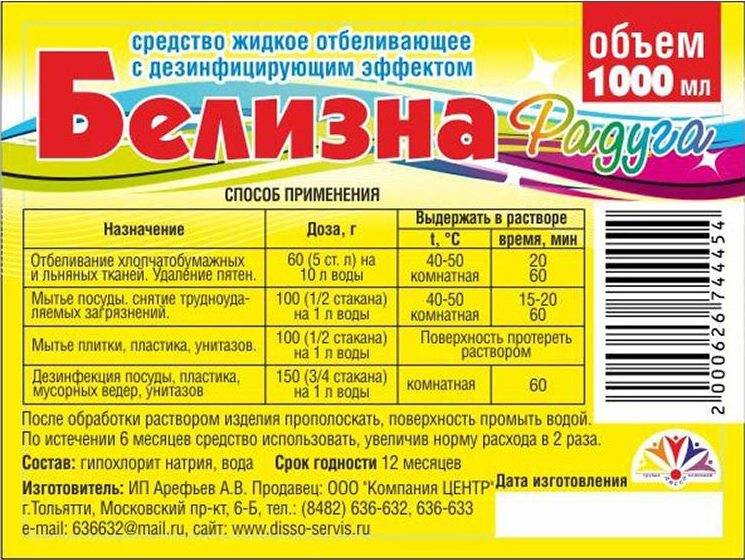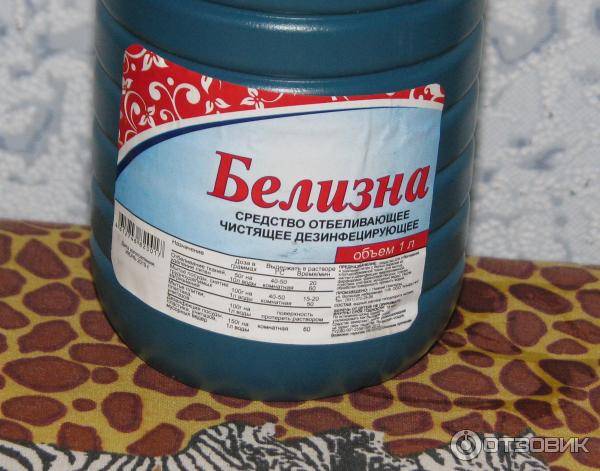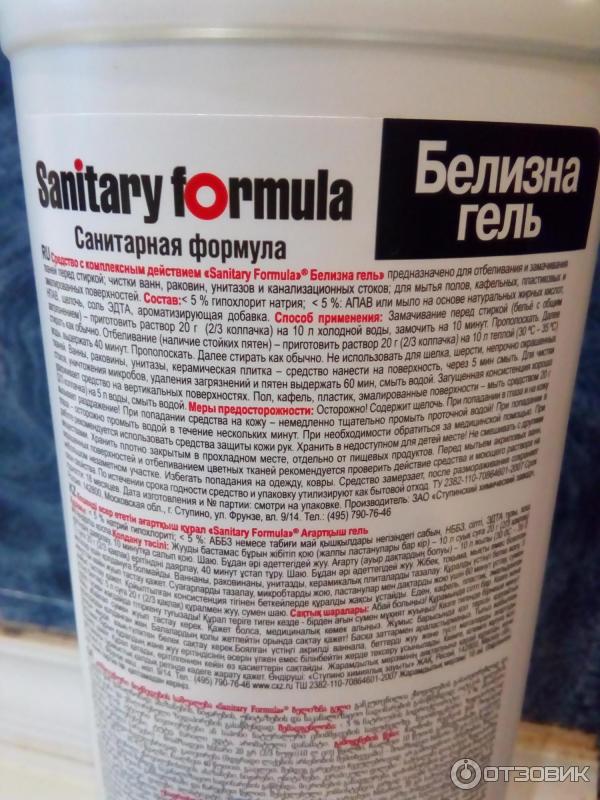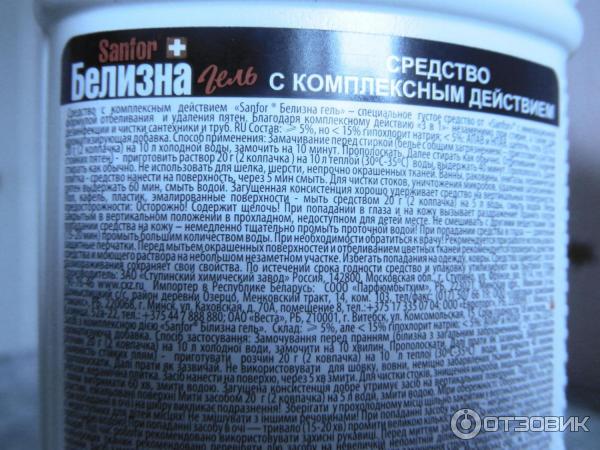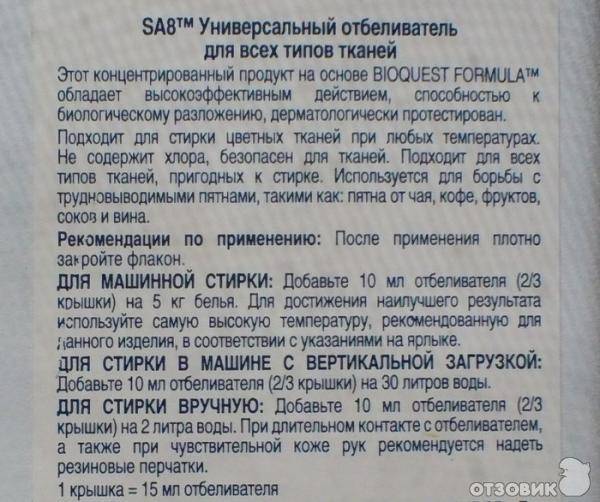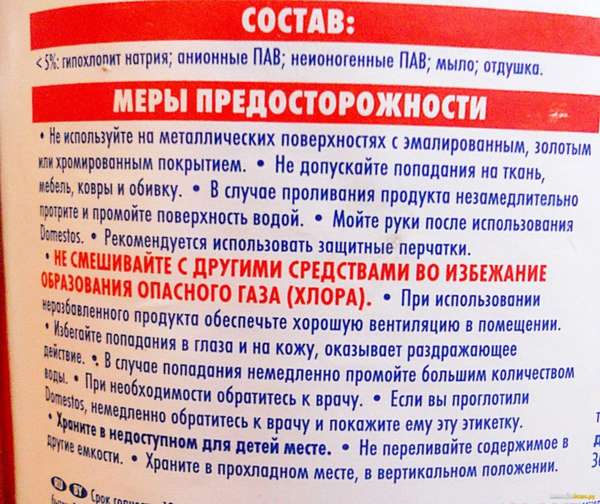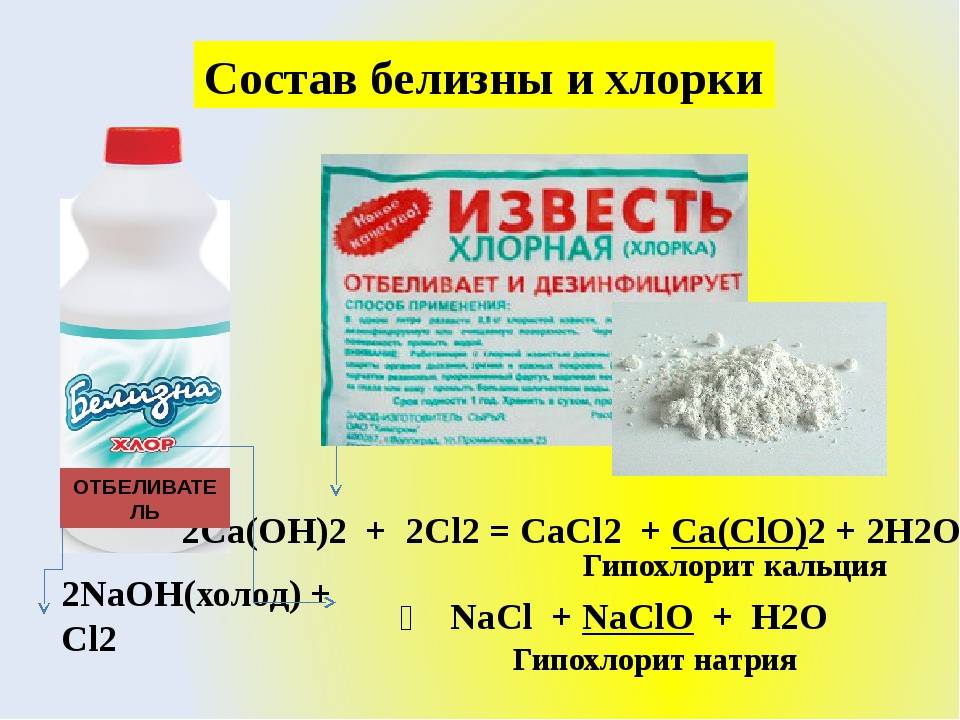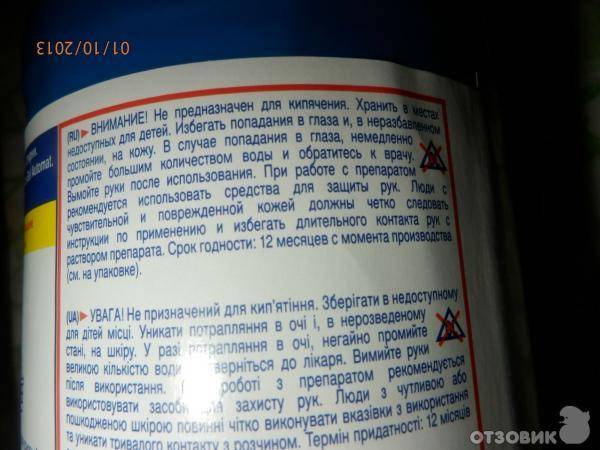How to use whiteness for disinfection in the apartment?
For disinfection, Whiteness is the best option, as it is a powerful antiseptic and effectively fights most microorganisms.
We disinfect plumbing
To wash dishes, use the following solution: for 1 liter of water, 60-100 ml of bleach. With this tool, you can wash dishes after an infectious patient, as well as a washbasin, toilet bowl and floors.
We clean sewer drains
Use the following method to clean and disinfect the sewer drain:
- Pour 1 liter of undiluted bleach into the toilet or sink.
- Cover the plumbing with a lid or stopper overnight.
- Flush the plumbing with plenty of cold water in the morning.
We clean the toilet for animals
For cleaning and disinfection of pet trays, use the preparation as follows:
- Dissolve 100 ml of whiteness in 1 liter of water.
- Rinse the tray thoroughly with the resulting solution.
- Rinse the tray with plenty of running water.
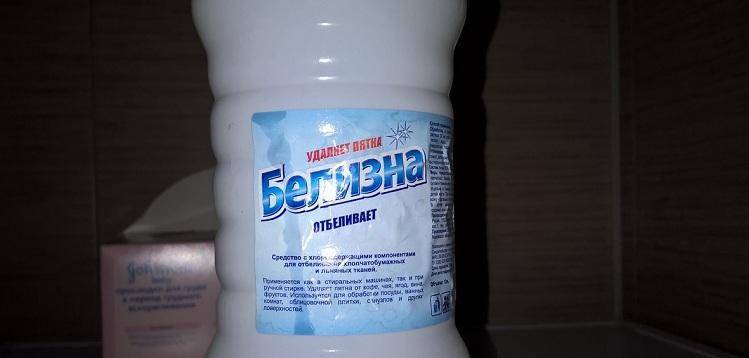
We clean animal cages
Cages for animals and birds can also be disinfected with the agent. This procedure must be carried out at least 2 times a year. Use "Whiteness" as follows:
- Move the animals (birds) out of their cages.
- Spray the “Whiteness” solution over the entire surface of the cells (200 ml of whiteness per 5 liters of water).
- Treat the corners and floor thoroughly with the product.
- After a couple of hours, rinse the cells with a strong stream of water. If you have a steam generator, use it.
- After the cells are completely dry, they can be used for animals (or birds).
We clean the filters
When replacing cartridges for disinfecting filters in the "Reverse Osmosis" cleaning system, use bleach as follows:
- Remove the cartridges and reverse osmosis membrane.
- Screw the second and third flasks in the direction of the water flow.
- Connect a tube from a purified water tap to a tee (instead of a charcoal filter).
- Pour 10 ml of bleach into the first flask and add water.
- Tighten the flask.
- After 15-20 minutes, open the water supply tap, as well as the purified water tap.
- As soon as you smell chlorine from the tap of purified water, close the taps and wait a few hours.
- Open the taps again to let the water flow until the chlorine is completely flushed out.
- After processing, insert the membrane and a new carbon filter.
How to use whiteness to clean a well
It is necessary to chlorinate the water in the well correctly, observing the proportions and strictly following the instructions for using the product:
- First of all, it is necessary to pump out water from the well with a pump or to drain it if the depth is shallow.
- Clean the walls of the well with a stiff brush.
- Prepare a solution by mixing 10 liters of water and 600 ml of bleach.
- Apply the agent to the walls of the well (using a spray gun) as well as the upper superstructure, including the cover.
- Fill the well with water.
- Pour the prepared new whiteness solution into the water at the rate of 1 liter per 1 ring.
- Raise and lower the bucket while stirring the water.
- Cover the well with polyethylene for 6-10 hours to prevent chlorine from evaporating.
- Pump out the water until the chlorine odor disappears.
Application of "Whiteness" for washing and soaking
On the shelves of home chemistry stores, you can see many different products for removing stains and whitening, but this tool still remains at the first positions. Try to follow the manufacturer's recommendations and you can use this product without any harm.
Soak
- How much bleach to pour? Fill a basin with cold water, add 2 tablespoons of bleach to 10 liters of water.
- Immerse the fabric in the resulting solution for 20 minutes, this is sufficient, but in some cases it can be left for 60 minutes to remove yellowness.
- Remove and rinse thoroughly, then wash.
- Individual stains can also be removed with bleach. The bleach is applied to the stain and rinsed off after a minute under running water, and then the wash.
- You cannot use hot water for washing and soaking, chlorine will evaporate immediately, the fabric will not bleach, and you will inhale the poison.
Washing
First of all, see the instructions for your washing machine, everything should be written there. As a last resort, if they do not write anything about chlorine, then it is better not to use this bleach. In this case, too, everything is simple, before washing, sort things colored from whites, linen and cotton from wool.
Follow the instructions and do not pour too much "Whiteness", with a large amount of this product, the threads of the material become thinner and, accordingly, wear out faster.
When working with popular bleach, it is better to remove all colored things away, because if at least one drop gets on them, stains may remain.
Use of "Whiteness" when cleaning premises
"Whiteness" is the worst enemy for microbes, it is still used in hospitals for cleaning floors, walls and bathrooms.
For different surfaces, different proportions are used, for example, for toilets and urinals, up to 100 ml are given for 1 liter of water. bleach. To clean the sewage system, an undiluted product is poured into the toilet, you can do this at night, and in the morning rinse with plenty of water.
"Whiteness" gives a good result in the fight against fungus. To do this, you just need to wet the sponge with bleach and wipe the affected area on the wall, after a few minutes repeat the procedure. Chlorine kills the spores of the fungus, and the next time it may not appear soon.
Precautionary measures
This bleach contains active chlorine, which evaporates quickly, therefore, when working with this substance, you must adhere to some safety measures:
- Take care of your eyes, even if suddenly a little of this liquid gets into the eye, immediately rinse the eyeball under running water and run to the doctor.
- Always use rubber gloves, the delicate skin of a woman's hands can be injured.
- Store in a dark place out of the reach of other family members, especially children.
- Remember about the shelf life, it is better to use an open bottle within six months.
- Wear rubber gloves to avoid damaging your hands with bleach.
- No matter how you use "Whiteness", while working with it and after that, the room must be well ventilated, otherwise you cannot avoid poisoning with chlorine vapors.
- Chlorine can leave traces on clothes, so be careful and use protective equipment.
- Never mix "Whiteness" with other chemicals, otherwise you get such a poisonous mixture that poisoning can lead to tragic consequences.
- For information: metal surfaces oxidize when in contact with chlorine, plastic tolerates everything.
- Nowadays, in stores there is not only a liquid, but also a gel-like product with the same name. This washing bleach costs a little more, but it is much more convenient to use than liquid bleach.
There is no need to be afraid of bleach, it is no more dangerous than other products. With proper use and compliance with all safety rules, this bleach can be used in all areas of activity.
We wash the sink with "Whiteness" - on the video.
Source:.
Whitening with baking soda
Soda is considered a fabric-safe bleach. Using this method, you can keep your favorite clothes in great shape for a long time without fear of ruining them. Take 10 liters of warm water, add 10 tablespoons of baking soda and 5 tablespoons of ammonia.Dip the clothing in the resulting solution and leave to act for three hours. Then wash as usual with detergent powder.
The use of whitening soda is recommended for baby linen, as it is absolutely safe and cannot damage delicate skin. If soaking alone is not enough to get rid of stains and dirt, then boil in the same solution for 30 minutes. You will have to spend time, but the result will be no worse than the bleach you can buy in the store. But keep the fabrics in their original form.
How not to accidentally ruin your clothes when bleaching
As already mentioned, most bleaching products can damage the structure of the fabric. And if you do not take into account the recommended amount of funds or the exposure time, then most likely this cannot be avoided. There are also a few more nuances that must also be observed when whitening.
Do not use chemical bleaches if your clothes have rusty stains. Since when they dissolve, all clothes will turn yellow and deteriorate.
Do not leave clothes with metal fittings for soaking for a long time. For such things, you must use water not higher than 40 degrees.
It is best to choose plastic containers for carrying out procedures for the return of white things. Metal and enamel dishes often have minor damages that can give undesirable reactions when exposed to chemicals.
Be sure to make sure that this item can be bleached before carrying out the procedure. This information is usually indicated on the label. The icon indicating that this should not be done looks like a triangle crossed by two lines. This is especially true for delicate thin fabrics.
This drug is the most famous and popular remedy for stains, as well as a bleach used by our grandmothers. In this article, we will focus on the whiteness of the gel, the instructions for the use of which are not complicated and can be mastered by absolutely every person.
To answer the question of what this whitening agent is, as well as what its use gives, you must first analyze the description and composition of whiteness. She owes her super abilities to disinfect things sodium hypochlorite
, which is part of it. Thanks to this substance, whiteness for disinfection has been recognized as one of the best means for quite a long time. In addition, the use of whiteness against white traces, greasy stains in the bathroom makes the task much easier. White,
the composition of which, as well as its instructions, does not represent anything complicated, used by almost any housewife.
How to apply
 Tile cleaning
Tile cleaning
Chlorine-containing bleaches are effective against most pathogenic microorganisms: viruses, bacteria and fungi. They can be used to clean any area that is not afraid of chlorine exposure, including cat litter boxes and aquariums. Medicine allows the use of solutions in schools, kindergartens, especially during seasonal epidemics or as a means with which you can wash the floor after a broken thermometer.
Whiteness, instructions for use for disinfection:
Aquariums - after moving the fish to another place, prepare a warm solution (for 1 hour of whiteness, take 20 hours of liquid). The mixture is poured into the aquarium along with artificial decorations, kept for 2-3 hours, then washed under pressure.
Animal trays and cages - how to dilute whiteness for disinfection: dissolve 100 ml of solution in 1 liter of liquid. Birds, cats and small dogs are removed from the room
The resulting mixture is used to disinfect all areas of the houses and trays, paying special attention to the joints and corners.After rinsing under a tap and completely drying, the items are completely safe for animals.
Tiles and floor coverings - how to properly wash floors with whiteness: 10 caps of solution are dissolved in 10 liters of warm liquid
After disinfection, the agent is left for 15 minutes, washed again. Mold removal in the house and on the walls of the summer pool is carried out with a concentrated solution using a soft sponge.
Plumbing - the substance helps to get rid of simple blockages, dirt and unpleasant odors, to return the white color. 1 liter of liquid is poured into the drain of the toilet, bath or washbasin, left for 10 hours. The procedure is carried out in the evening, in the morning they are washed under pressure.
Well - washing is carried out with a solution (0.5 liters of bleach is taken per bucket), which is applied to the walls. After filling it, a disinfectant is added to the liquid again (1 liter per ring), closed and left for 48 hours. The contents are pumped out several times to get rid of the chlorine smell. It is strictly forbidden to wash or use liquid for drinking until complete cleaning.
Important! Is it possible to wash floors with whiteness with the addition of another agent: experts note that mixing substances can provoke unpredictable chemical reactions and food poisoning. At best, it will lead to a decrease in the effectiveness of the chlorine-containing solution.
White bleach
Whiteness: chemical composition
Whiteness is a liquid agent, the active basis of which is sodium hypochlorite. Introducing the chemical formula for the sodium salt of hypochlorous acid - NaOCl. Chemical properties reveal that this agent is a strong oxidizing agent. So, even at the molecular level, the solution destroys pollutants precisely by oxidation.
In undiluted form, the solution has a greenish-yellow or yellowish tint, a distinctive feature is also a pungent smell of bleach, which irritates the eyes and makes breathing difficult.
Many are sure that whiteness, etc. "Chlorine" (chlorine-lime solution) - identical means. But this is just a delusion. In fact, both have different properties and, of course, chemical formulas. The difference between these means can be understood by comparing their components. Bleach, for example, differs from whiteness in that it is a solution-concentrate of bleach, which is produced in tablets or in powder form. Bleach is usually used as a disinfectant in kindergartens, medical institutions, educational institutions, etc.
In addition to the main component of whiteness - sodium hypochlorite, which includes up to 95 percent of active chlorine, it also contains:
- Surfactants (surfactants) - they improve the soap, detergent characteristics of the product;
- caustic soda (or sodium hydroxide) - thanks to it, an alkaline balance is ensured, it also helps to soften water.
The high concentration of active chlorine decreases significantly over time. Do not forget that whiteness in composition is a toxic agent, therefore it is necessary that the instructions for using this agent be properly studied. The main thing is to strictly adhere to it. Otherwise, the product can seriously harm your health.
It is also worth noting that today each manufacturer, as a rule, "masks" an unpleasant, rather pungent smell of whiteness with the help of one or another flavoring agent.
Whiteness: Benefits
This remedy is different:
- ease of dilution in water;
- multifunctionality (cleans and disinfects hard surfaces, bleaches linen, removes stains from soft tissues);
- economy (low consumption, low cost);
- whiteness is also effective at both low and high t.
Whitening clothes
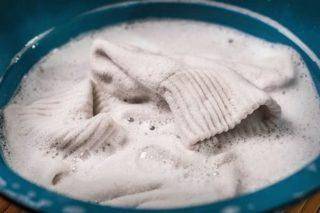 Soaking clothes
Soaking clothes
Manufacturers of the drug allow the use of whiteness for things made of cotton or linen material.Silk, woolen, synthetic fabrics printed or dyed in bright colors will lose their appearance due to exposure to bleaching agents.
Do not use a solution for old things - an aggressive chemical reaction will destroy worn-out fibers, provoke the appearance of whitish spots.
There are several methods for using chlorine-containing products:
- Getting rid of the yellow, gray tint - 2 tbsp. l. Whiteness is diluted in 10 liters of liquid, things are soaked for 1 hour. After rinsing, they are sent to the washing machine. This method is not suitable for fabrics with a weak structure - the aggressive effect of diluted bleach will destroy it.
- Stain treatment - used only on dense fabrics. The concentrated substance is poured onto the problem area, after a few minutes the product is rinsed. Longer exposure will result in discoloration and whitish spots. Washing is carried out in a typewriter at a temperature of 60 degrees.
- Preservation of a snow-white color - achieved by soaking the laundry for 20 minutes. A solution is preliminarily prepared in the proportion: 5 liters of cool liquid per 1 tbsp. l. funds. After the end of the procedure, the linen is thoroughly rinsed, washed with powder - to neutralize the smell and the effect of bleach.
Bleaching of bed linen, tea towels and small items can also be done in a typewriter. Before the procedure, you need to familiarize yourself with the documentation for the device:
- the operating instructions should not contain prohibitions on the use of chlorine-containing substances;
- if the outlet tubes of the device are made of rubber, then it is better to refrain from washing - they must be plastic, and the drum must have anti-corrosion protection;
- when bleaching, you cannot set a mode with maximum temperatures - tactics will harm both clothing and equipment;
- the product is not poured into the dispenser, but inside - it must be pre-diluted;
- before washing, the laundry is soaked in cold liquid.
Important! The recommended mode for the machine is with a pre-wash followed by a double rinse. When using it, there is no need for secondary rinsing of things.
How to use whiteness to bleach clothes?
Despite the abundance of new modern bleaching agents, "Whiteness" is still popular with consumers. However, before using "Whiteness", read the instructions for use and maintain only the dosage recommended by the manufacturer. If you learn how to use bleach correctly at home, you will quickly and easily restore your favorite items without negative consequences. Experts and regular users of the product recommend using the tool in one of the following ways.
Method number 1 - to maintain the whiteness of the fabric:
- Pour 10 liters of cool water into a basin.
- Add 2 tbsp to the water. l. Whiteness and stir.
- Soak the laundry in the prepared solution and leave it for 20 minutes (no more).
- Rinse the garments while removing the bleach.
- Wash the product in the traditional way.
Method number 2 - to eliminate grayness, yellowness and restore white color
This method involves performing all the same manipulations with one condition: increase the soaking time to 1 hour.
Method number 3 - bleaching very dense fabric:
- Apply Whiteness directly to the stain or unsightly stains on the fabric.
- Wait a while - no more than a minute.
- Soak the product in a general purpose detergent solution.
- Treat the fabric - wash in the traditional way.
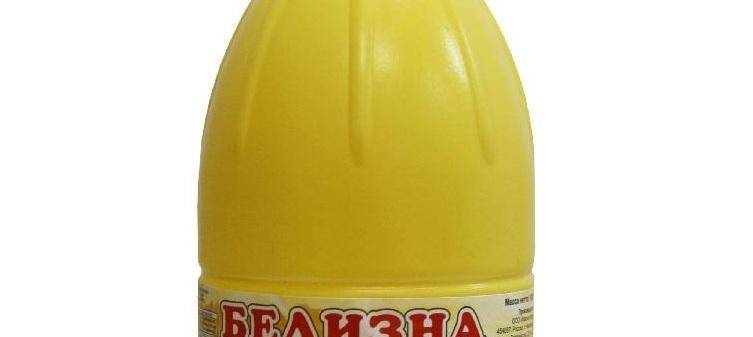
Precautions and advice on handling the product
Since Whiteness is a potent chlorine-containing bleach, the following precautions must be taken when working with it:
- Remove from the reach of items that cannot be bleached, as drops of “Whiteness” accidentally falling on them can leave stains on the fabric.
- Limit children's access to bleach.
- Avoid contact with eyes.
- Protect your hands with gloves when handling the product.
- If, during the whitening process, bleach gets on open skin or mucous membranes, rinse the affected area urgently and contact a healthcare professional as soon as possible. It is impossible to treat irritation or ulcers that have appeared on your own, since new chemical reactions can aggravate the situation.
- Store household chemicals in a dry, dark and warm place. It is strictly forbidden to keep the product on the balcony, especially in winter, as after freezing the liquid completely loses its effectiveness.
- Use an open bottle within six months - after this time, the chemical composition of the product will noticeably change, and as a result, the effectiveness will decrease.
How to use whiteness for whitening
Whiteness is great for removing stains and whitening fabrics. It is advisable to use it for hand washing, but you can add a little solution to the machine. There are several ways to use Whiteness for whitening. Consideration should be given to the material from which the product is made. All this will help to avoid damage to things.
What things can be washed with Whiteness
You can add it when washing nightgowns and pajamas, shirts and other light-colored items made from natural linen or cotton. Some people resort to such an interesting method as decorating jeans with bleach. It is easy to create streaks and stains with a chlorine-based product. Wool, synthetics, leather, organza, chiffon do not need to be bleached. The structure of delicate fabrics will be damaged and cannot be restored.
How to soak laundry in Whiteness
Pre-white clothes must be sorted into several parts, for example, baby clothes, bedding, cotton products. Clothes for babies must be rinsed several times so that residues of the product do not cause allergies. How to bleach linen with Whiteness correctly:
pour cool water into a bowl and add bleach (for 3.5 liters, no more than 1 tbsp
l.);
wet and soap clothes, paying attention to dirt;
for soaking, leave for 15-20 minutes in the solution;
rinse clothes thoroughly several times .. Dry clothes in the fresh air, as after the product there is a strong smell
To remove stains, it is enough to dilute the bleach with a little water and cover only the dirty areas with it.
Dry your laundry in the fresh air, as a pungent smell remains after the product. To remove stains, just dilute the bleach with a little water and cover only the dirty areas with it.
Use of Machine Washable White
It is undesirable to pour the substance into the washing machine - this can lead to breakage or ingestion of odors. The instructions for the device indicate whether it is possible to use bleach or powders, where it is contained. In addition, instructions for the use of Whiteness are always described on its packaging. Washing in a typewriter step by step:
- sort things and wet them with cold water;
- choose a temperature regime (you cannot wash things with a product in hot water);
- pour 1-2 tbsp. l. substances in the drum;
- after washing, rinse the items several times with water.
Why else is whiteness useful in the household?
How to use whiteness for other household needs? She perfectly cleans tiles, faience - a cap of the product for five liters of water, wipe the dirty surface with a solution, rinse. To clean the pipes, whiteness is poured into the drain, wait several hours and let cold water in to rinse the drain. A weak aqueous solution (5 ml / 1 l) is used to disinfect household containers (for example, waste bins), aquariums, toilet and bathroom floors.
It is worth knowing that whiteness reacts with alkaline detergents to form chlorine gas. To avoid causing a chemical disaster in your home, use whiteness separately from all other substances. If you practice and start using whiteness wherever you can, you can save a lot of the money that used to be spent on expensive detergents - half of them are the same whiteness, only with fragrances.
How to dilute "Whiteness" for disinfection
"Whiteness" copes well with the most problematic areas - plumbing fixtures, stove, sink and bath drains. To clean drains, use undiluted compound: pour into the toilet and leave for 8-10 hours (for example, overnight). Then rinse with plenty of water to get rid of germs, small blockages and unpleasant odors.
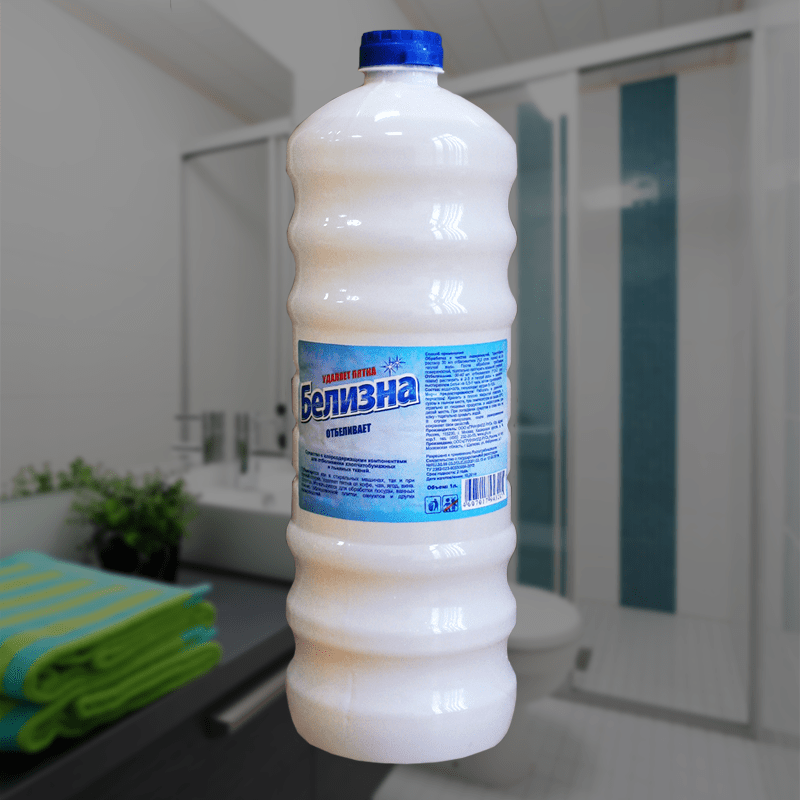
Precautionary measures
- "Whiteness" is a caustic substance that leaves chemical burns on the skin and mucous membranes. Be sure to use household gloves, wear a respirator, and ventilate the area after disinfection.
- Store the product in a dark, cool place, out of reach of children and animals. Remember that the shelf life of "Whiteness" is 12 months, after a year the unused gel should be thrown away, as it will "fizzle out" anyway.
- Do not use "Whiteness" for self-treatment (for example, to get rid of nail fungus). Most likely, only hurt yourself!
What if the whiteness is on the clothes?
Stains from "Whiteness" are difficult to remove, so it must be applied carefully
The following precautions must be taken:
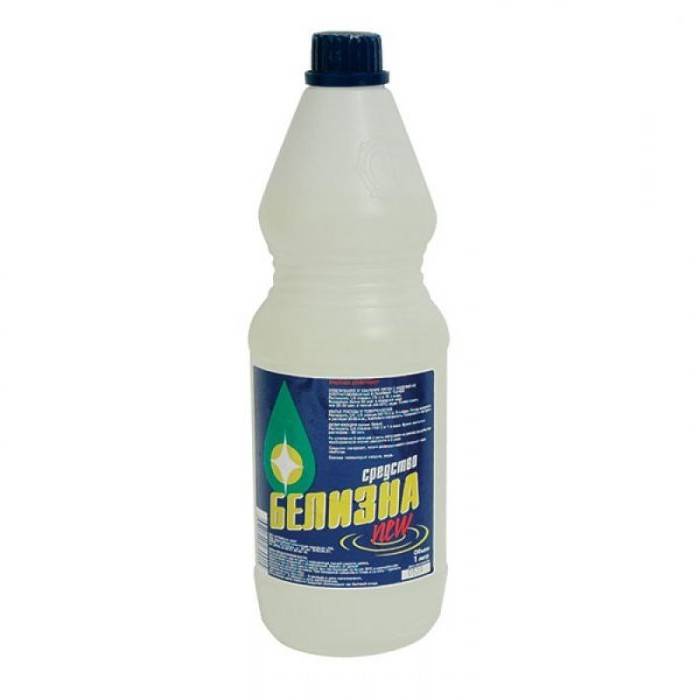
- Wear protective gloves before washing.
- Whiteness should not be allowed to enter the eyes.
- It is necessary to limit the access of children to the drug.
What should be done if "Whiteness" gets on the thing and yellow spots appear on it? There are several methods that can remove dirt from fabric:
- Hydrogen peroxide: soak a cotton pad in the product, wipe the clothes with powder, and then rinse in cool water with conditioner. This method is suitable for fresh small stains.
- Aspirin: crush 2 tablets, dissolve them in warm water, apply the mixture to the item, and after 2 hours wash the items with powder. The method is ideal for removing contaminants that have arisen more than 3 days ago.
- Ammonia. Add the agent and salt to the water (1 tsp each), and then soak the product in the solution for half an hour. Then the thing must be washed with soap.
What is the composition of the whiteness agent?
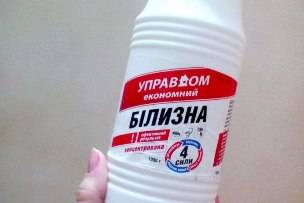 Whiteness is an effective remedy that qualitatively eliminates various microorganisms. It comes in the form of a gel or a yellowish solution that has a rather pungent odor. It is based on sodium hypochlorite, a powerful oxidizing agent with high antiseptic properties. In addition, whiteness contains 95.2% active chlorine and up to 15 g / dm3 of alkaline components. In addition, surfactants are added to the bleach, due to which good wettability of fabrics is ensured.
Whiteness is an effective remedy that qualitatively eliminates various microorganisms. It comes in the form of a gel or a yellowish solution that has a rather pungent odor. It is based on sodium hypochlorite, a powerful oxidizing agent with high antiseptic properties. In addition, whiteness contains 95.2% active chlorine and up to 15 g / dm3 of alkaline components. In addition, surfactants are added to the bleach, due to which good wettability of fabrics is ensured.
Many housewives are interested in how harmful the composition of the product is. Whiteness does not pose a health hazard if the instructions are followed exactly and the indicated proportions are not exceeded. If you use an antiseptic at home, be sure to follow safety measures and do not violate the rules for storing it.
What is bleach used for?
The scope of whiteness is very wide. It is used for:
- bleaching linen;
- cleaning linen and cotton clothing;
- washing dishes made of plastic, porcelain and faience;
- elimination of various types of stains;
- washing ceramic tiles.
The tool is great for disinfecting plumbing fixtures, aquariums, cat litter, trash cans. It can effectively clean wells, water filters, and animal cages.
Advantages and disadvantages of an antiseptic
Due to its unique composition, whiteness is excellent for disinfecting and washing things. Benefits of whiteness:
- a universal product can be used to remove stains, eliminate unpleasant odors, and also to destroy various bacteria;
- has an affordable cost and economical consumption;
- the solution is very easy to use and effective even when washing in cold water.
The disadvantages of whiteness include a sharp unpleasant smell of chlorine. In addition, bleach is not very gentle on laundry, as opposed to more delicate products. It is recommended to use it in moderate dosages, otherwise holes may form on things.
Main characteristics of whiteness
 Whiteness is a substance with excellent antiseptic properties
Whiteness is a substance with excellent antiseptic properties
and amazing whitening properties. In undiluted form, the product has a yellowish tint and a pungent bleach smell, which is irritating to the eyes and respiratory system.
Now every manufacturer is trying to "mask" this unpleasant smell with the help of various flavors. Sometimes surfactants are added to the composition of this miracle product so that the product can foam well - this helps when washing clothes.
Sodium hypochlorite acts as a basis
, and various alkaline components are added to it - that's the whole whiteness of the composition.
Whiteness: instructions for the use of a universal substance
Active chlorine, which is part of the whiteness, tends to evaporate quickly, so it is worth observing certain safety measures so as not to harm your health.
Never let this product get into your eyes.
, as you can get a chemical burn of the eyeball or cornea. If this does happen, then it is necessary to rinse the eye with a large amount of running water and contact a medical institution as soon as possible.
Store the product in a dark place
away from heating appliances and out of reach of children. This product is not applied after the expiration date, but it is best to use it within 6 months after opening the package.
Bleach can damage the integrity of the skin
, therefore, all work with such a tool is carried out using rubber gloves. In addition, it is necessary to use the product in a room that is well ventilated, and after work, ventilate it additionally so that poisoning with volatile vapors of active chlorine does not occur.
Handle this chlorine-containing substance with care so that nothing gets on your clothes. this is the product is capable of leaving irreducible marks
... And it is best to use clothes that you do not mind ruining.
Such a remedy is not mixed with other chemical products, since a poisonous formation can result, the vapors of which will lead to serious poisoning or even death. For the same reason, you cannot use other means immediately after using whiteness, that is, until the vapors from it have completely evaporated.
Chlorine, which is part of whiteness, is capable of oxidizing metal objects, but the plastic will withstand the "pressure" of this product.
Gel-like whiteness
 Whiteness in the form of a gel is slightly more expensive than its liquid counterpart, but it is much easier to use. The less fluid form of the gel allows it to be fixed on the cleaned, inclined surfaces longer than the liquid form, so the consumption of the product is more economical. It is in this type of chlorine-containing agent that manufacturers most often mix various aromatic fragrances, so it is much more pleasant to use it.
Whiteness in the form of a gel is slightly more expensive than its liquid counterpart, but it is much easier to use. The less fluid form of the gel allows it to be fixed on the cleaned, inclined surfaces longer than the liquid form, so the consumption of the product is more economical. It is in this type of chlorine-containing agent that manufacturers most often mix various aromatic fragrances, so it is much more pleasant to use it.
Whiteness-gel is often used in washing to whiten clothes.
, at the same time, it will be necessary to rinse such linen several times so that the bleaching components do not remain in the structure of the fabric and do not spoil it.
Harm to health from whiteness
The disinfector is corrosive and must therefore be used in accordance with the recommendations indicated on the label. Chlorine in its composition negatively affects a person:
- Its vapors irritate the respiratory tract, causing coughing, sneezing, and sore throat. This effect occurs when working in an unventilated room, but does not lead to severe poisoning.
- Redness of the eyes and conjunctivitis are also the consequences of contact with a chlorine-containing solution. When such signs appear, it is enough to rinse your eyes, rinse your throat, and go out into the fresh air.
- Children are most susceptible to burns of the esophagus and gastrointestinal tract when swallowing whiteness. Poisoning symptoms: nausea, vomiting of blood, headache, high fever. As a first aid, before the arrival of doctors, it is necessary to wash the stomach, gargle with the addition of raw egg white.
- A chemical burn is possible if it gets into the eyes, to avoid this, you must immediately rinse your eyes with running water, drip sodium sulfacyl eye drops. With cutting pain, qualified help is needed.
- Contact dermatitis, burning, redness are unpleasant consequences for the skin when working without gloves. Baking soda solution relieves itching and relieves the condition.
Since "Whiteness" is a potent bleaching agent, it should be used carefully, following simple recommendations.
No agent with a bactericidal and whitening effect is absolutely harmless, for this reason, precautions must be taken when in contact with it:
- Keep out of the reach of children.
- Use protective gloves, a mask, and goggles when working.
- Do not mix with other chemicals.
- Ventilate the room.
- Change clothes after completing work.
 If you forget to put on gloves, be sure to wash your hands well with soap and running water.
If you forget to put on gloves, be sure to wash your hands well with soap and running water.

